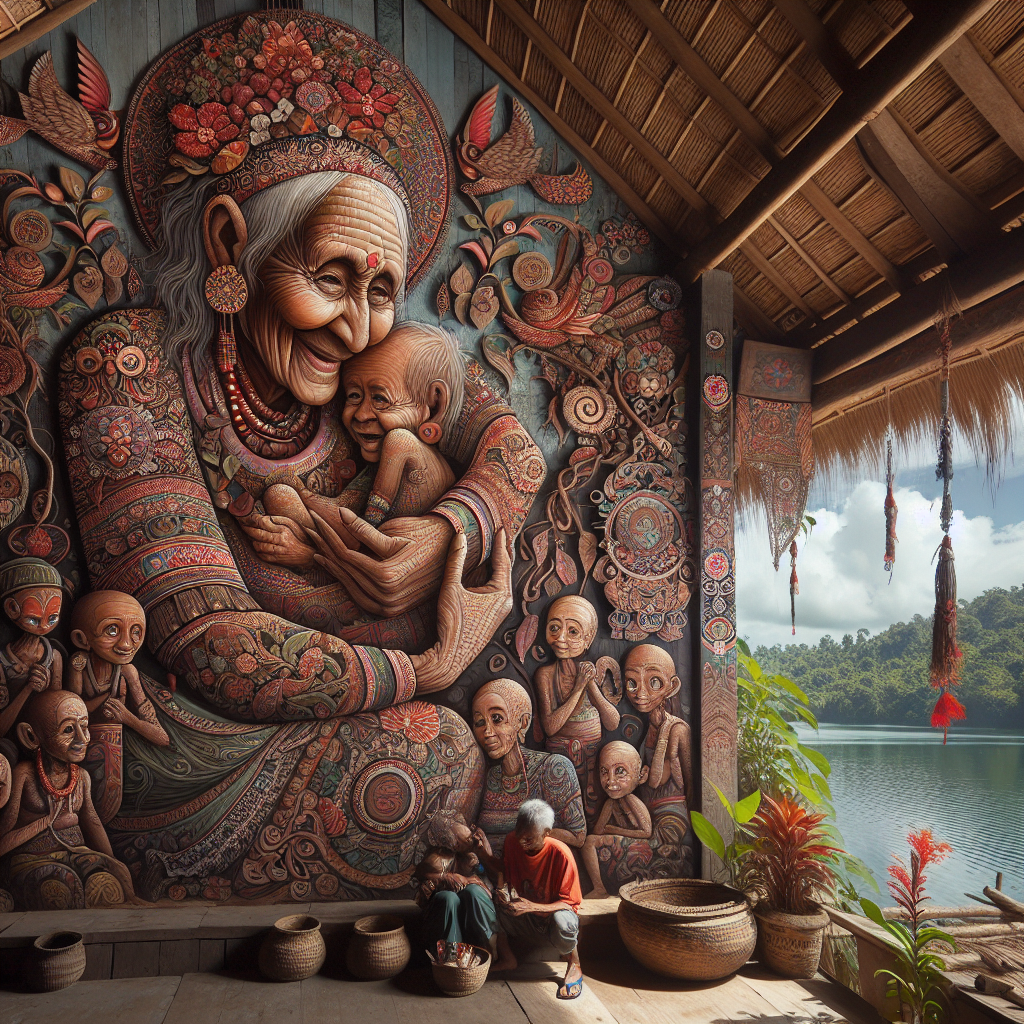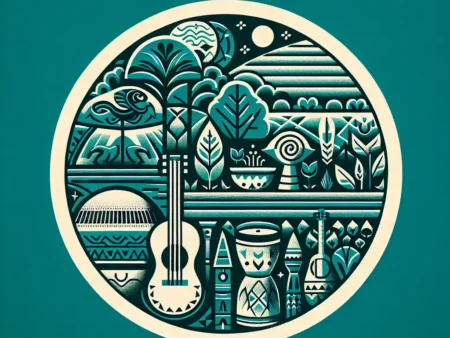Deskripsi meta: Warisan Budaya Takbenda: Tradisi hidup yang dilestarikan dan diwariskan dari generasi ke generasi.
Warisan Budaya Takbenda: Tradisi yang Masih Hidup
-
Table of Contents
- Introduction
- The Importance of Warisan Budaya Takbenda
- 1. Cultural Identity
- 2. Social Cohesion
- 3. Sustainable Development
- Examples of Warisan Budaya Takbenda in Indonesia
- 1. Batik
- 2. Wayang Kulit
- 3. Gamelan
- Preserving and Safeguarding Warisan Budaya Takbenda
- 1. UNESCO’s Intangible Cultural Heritage List
- 2. Government Initiatives
- 3. Community Involvement
- Conclusion
Introduction

Indonesia is a country rich in cultural heritage, with a diverse range of traditions and customs that have been passed down through generations. One aspect of this cultural heritage is the concept of “Warisan Budaya Takbenda,” which refers to intangible cultural heritage. Unlike tangible heritage, such as historical buildings or artifacts, intangible cultural heritage encompasses practices, expressions, knowledge, and skills that are transmitted from one generation to another. In this article, we will explore the significance of Warisan Budaya Takbenda in Indonesia and how these traditions continue to thrive in the modern era.
The Importance of Warisan Budaya Takbenda
Warisan Budaya Takbenda plays a crucial role in preserving and promoting Indonesia’s cultural diversity. These intangible cultural heritage elements are deeply rooted in the daily lives of communities across the archipelago. They provide a sense of identity, belonging, and continuity, connecting individuals to their ancestors and shaping their cultural expressions.
1. Cultural Identity
One of the key aspects of Warisan Budaya Takbenda is its ability to preserve cultural identity. These intangible heritage elements reflect the unique customs, beliefs, and values of different communities in Indonesia. For example, traditional dances like the Javanese “Lengger” or the Balinese “Kecak” are not only artistic performances but also representations of the cultural identity of the respective regions. By practicing and passing down these traditions, communities can maintain a strong sense of who they are and where they come from.
2. Social Cohesion
Warisan Budaya Takbenda also plays a vital role in fostering social cohesion within communities. Many of these intangible cultural heritage elements are performed collectively, involving various members of the community. For instance, the “Gotong Royong” tradition, which refers to communal work, is a prime example of how intangible heritage strengthens social bonds. Through shared activities and rituals, communities come together, collaborate, and build relationships, promoting a sense of unity and solidarity.
3. Sustainable Development
Preserving and promoting Warisan Budaya Takbenda can contribute to sustainable development in Indonesia. These intangible cultural heritage elements often rely on natural resources and traditional knowledge, which are closely linked to the environment. By safeguarding these traditions, communities are encouraged to adopt sustainable practices and maintain a harmonious relationship with their surroundings. For instance, the “Pantun” poetry tradition in Aceh not only preserves linguistic heritage but also promotes the appreciation of nature and the environment.
Examples of Warisan Budaya Takbenda in Indonesia
Indonesia is home to a vast array of intangible cultural heritage elements. Let’s explore some notable examples that highlight the diversity and richness of Warisan Budaya Takbenda in the country.
1. Batik
Batik is a traditional Indonesian textile art form that has been recognized as a Masterpiece of Oral and Intangible Heritage of Humanity by UNESCO. It involves the application of wax and dye to create intricate patterns on fabric. Batik is not only a form of artistic expression but also a symbol of Indonesian identity. Different regions in Indonesia have their unique styles and motifs, such as the Javanese batik, Balinese batik, and Sumatran batik.
2. Wayang Kulit
Wayang Kulit, or shadow puppetry, is a traditional form of storytelling that combines intricate puppets, music, and narration. It is performed using a screen made of translucent buffalo hide, with the puppeteer manipulating the puppets behind the screen. Wayang Kulit plays a significant role in Indonesian culture, conveying moral values, historical narratives, and religious teachings. It is often performed during special occasions, such as weddings and religious ceremonies.
3. Gamelan
Gamelan is a traditional Indonesian ensemble music that typically consists of percussion instruments, such as metallophones, gongs, and drums. It is an integral part of various cultural ceremonies, including weddings, funerals, and religious rituals. Gamelan music is known for its intricate rhythms and melodies, creating a mesmerizing and enchanting atmosphere. Different regions in Indonesia have their unique styles of gamelan, such as Javanese gamelan and Balinese gamelan.
Preserving and Safeguarding Warisan Budaya Takbenda
While Warisan Budaya Takbenda continues to thrive in Indonesia, it also faces various challenges. Rapid urbanization, globalization, and the influence of modern lifestyles pose a threat to the preservation of these intangible cultural heritage elements. However, efforts are being made to safeguard and promote Warisan Budaya Takbenda.
1. UNESCO’s Intangible Cultural Heritage List
Indonesia has actively participated in UNESCO’s Intangible Cultural Heritage List, which aims to safeguard and raise awareness about intangible cultural heritage worldwide. Several Indonesian traditions, including Batik, Wayang Kulit, and Gamelan, have been inscribed on this prestigious list. This recognition not only highlights the significance of these traditions but also encourages their preservation and transmission.
2. Government Initiatives
The Indonesian government has implemented various initiatives to preserve and promote Warisan Budaya Takbenda. The Ministry of Education and Culture has established programs to integrate intangible cultural heritage into the national curriculum, ensuring that younger generations learn about and appreciate these traditions. Additionally, the government supports cultural festivals, exhibitions, and workshops that showcase and celebrate Indonesia’s intangible cultural heritage.
3. Community Involvement
Communities themselves play a crucial role in safeguarding Warisan Budaya Takbenda. Many local communities have formed cultural preservation groups, actively engaging in the transmission and practice of their intangible heritage. These groups organize workshops, performances, and other activities to ensure the continuity of their traditions. By involving younger generations and raising awareness within their communities, they contribute to the long-term preservation of these cultural practices.
Conclusion
Warisan Budaya Takbenda, or intangible cultural heritage, holds immense value in Indonesia. It not only preserves cultural identity but also fosters social cohesion and contributes to sustainable development. Through traditions like Batik, Wayang Kulit, and Gamelan, communities continue to pass down their cultural heritage from one generation to another. While challenges exist, initiatives by UNESCO, the government, and local communities are working towards safeguarding and promoting these traditions. By recognizing the importance of Warisan Budaya Takbenda and actively participating in its preservation, Indonesia ensures the continuity of its rich cultural heritage for future generations.







